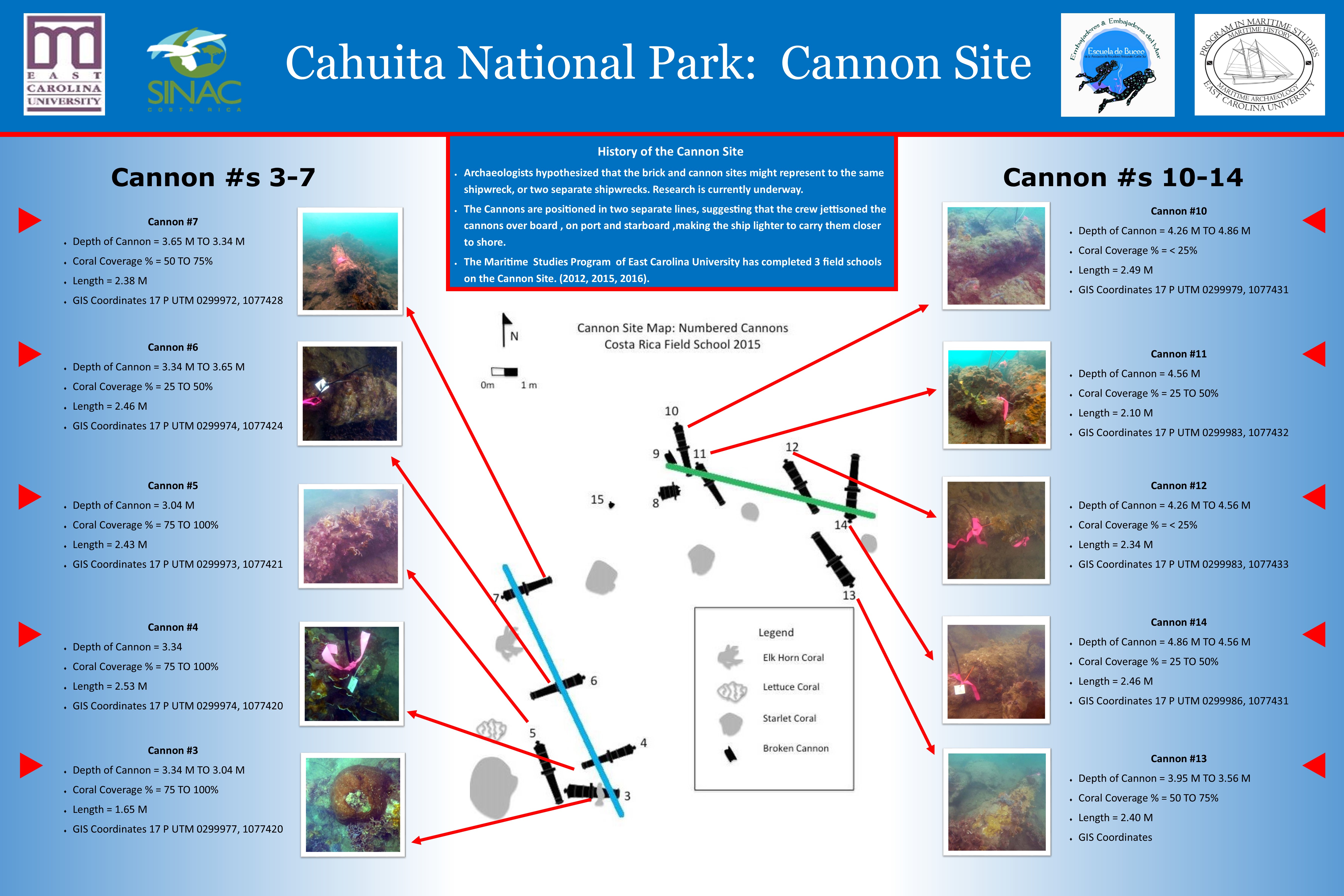
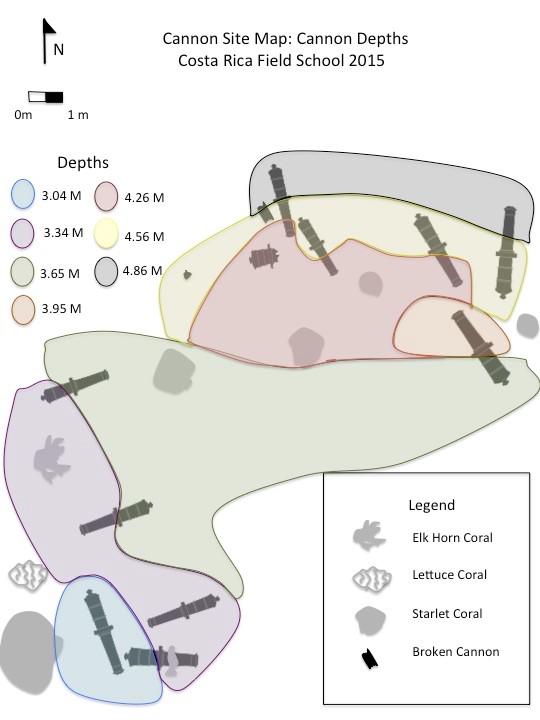
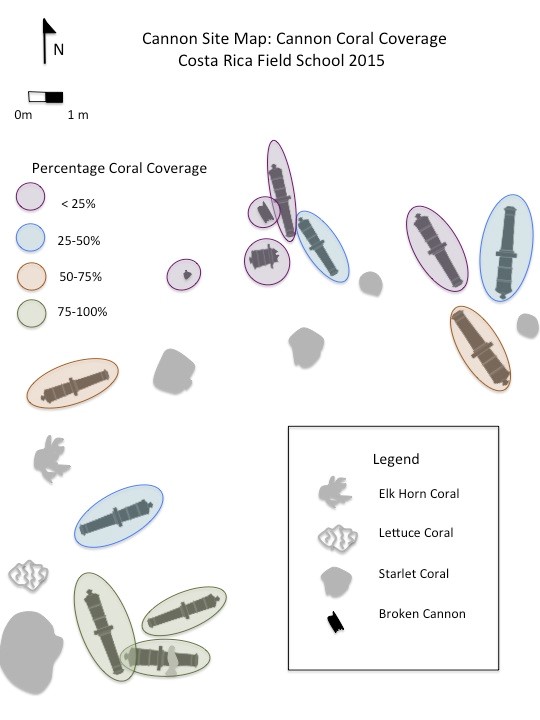
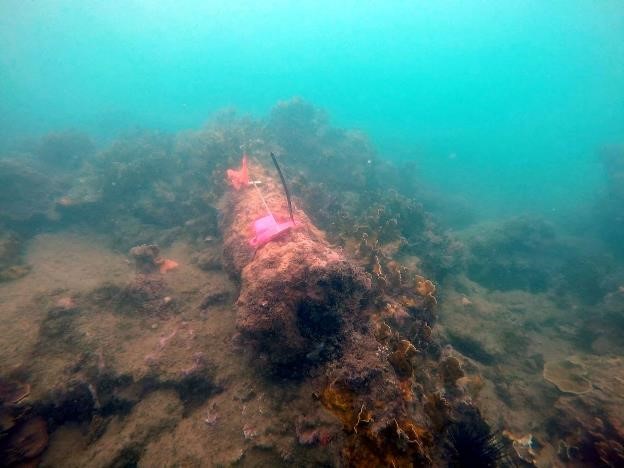
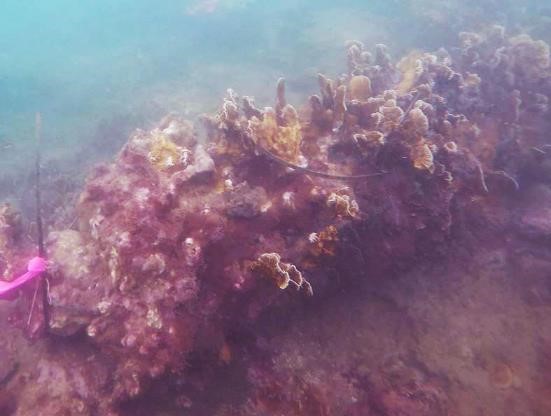
Coral can grow in a wide array of marine sites, each of which containing differing environmental and ecological factors that affect which typologies grow within specific locations. Some contributing factors include water depth, water temperature, rocky or sandy sea floors, how strong the current is, and other species of animals and algae’s in their ecosystems. However, coral growth on unnatural materials that represent cultural heritage, such as iron cannons and clay bricks, is a more recent phenomenon. The question maritime archaeologist are currently asking now is whether or not certain species of coral are growing on these anthropologically crafted artifacts, and why.
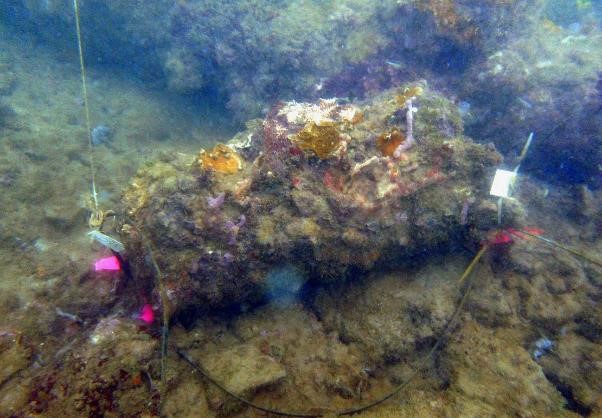
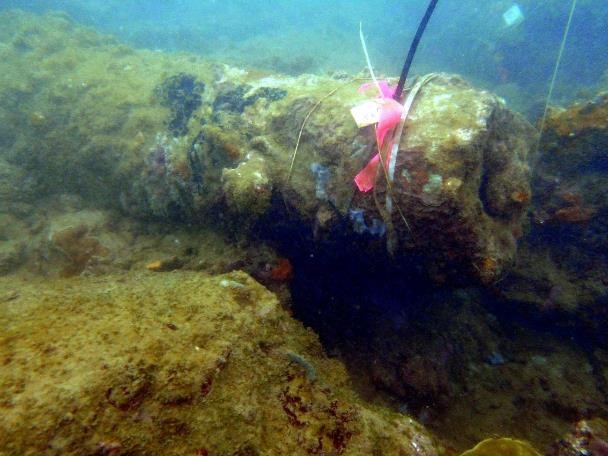
If there is a correlation between the 2015 and 2016 cannon site data, recovered by ECU, on the biological typologies of coral growth on and around the cannons, then there should be a way to determine if any artifacts are hidden beneath them. If there is a way to determine if artifacts are beneath specific types of corals in the area, then there also would be no need for random probing and disturbing the environment during the site surveys. Touching and probing the coral reefs can cause harmful results to both the coral by killing and discontinuing their reproductive cycles, and as a result the damage the entire ecosystem. This study will benefit maritime archaeology greatly, as well as the tourism industry, biology, and ecology of the Cahuita National Park in the form of protection of the Cannon site, and well as the ecosystems that live on it.